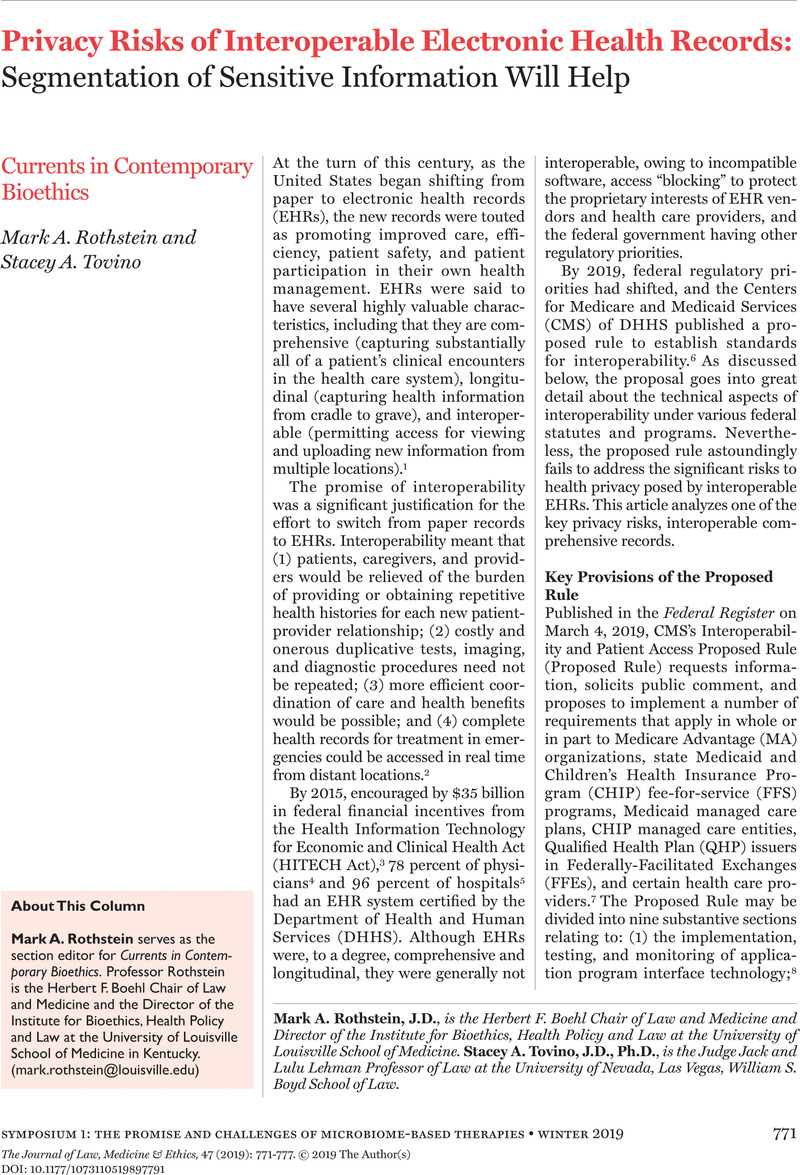Crossref Citations
This article has been cited by the following publications. This list is generated based on data provided by Crossref.
Rothstein, Mark A.
2021.
Big Data, Surveillance Capitalism, and Precision Medicine: Challenges for Privacy.
Journal of Law, Medicine & Ethics,
Vol. 49,
Issue. 4,
p.
666.
Walker, Daniel M.
Hoffman, Sharona
and
Adler-Milstein, Julia
2022.
Interoperability in a Post-RoeEra.
JAMA,
Vol. 328,
Issue. 17,
p.
1703.



